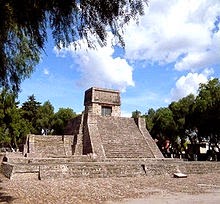(diary from day 9 of my trip - Dec. 13, 2014)
Am now in the little town of el Carmen, in the southern coastal area of Peru. To get here, you take a bus to Chincha and then a taxi from Chincha to el Carmen. It´s important to take a secure taxi...many of the taxis here are not secure, so you need to get the name of a taxi before you start your trip.
Am now in the little town of el Carmen, in the southern coastal area of Peru. To get here, you take a bus to Chincha and then a taxi from Chincha to el Carmen. It´s important to take a secure taxi...many of the taxis here are not secure, so you need to get the name of a taxi before you start your trip.
 |
| Many of the houses have murals. This is of a violinist who lead one of the hatajos. |
El
Carmen is a predominantly Afro-Peruvian town in which they carry on a
centuries old tradition called the "hatajo de negritos." The "hatajos"
are groups of dancers - all men except for one which is exclusively
women - who perform special dances on the occasion of Christmas, the
celebration of the Virgin of Carmen, and 12th Night.
I
am staying in a beautiful "hotel" - a big, airy house with 2 acres of
grounds planted in avocado trees, fruit, bananas, etc.. The proprietor
is Edith Maldonado, a woman instrumental in seeing to the production of the first
documentary about the "hatajos." She also co-founded one of the town's cultural organizations. This was back in 2007. A newer,
excellent, one was filmed in 2012 by the Peruvian Ministry of Culture.
 |
| Veranda at back of the house/hotel, with Edith Maldonado. |
Since
there are already two documentaries about the "hatajos," I filmed only a
tiny portion of one of the rehearsals. It is really wonderful stuff,
and a fascinating story.
People
here are loath to sign documents, an important consideration for me
since I need release forms signed. And drama, drama! One of the places
I was to film cancelled their rehearsal in part because, after I set up
my camera, I explained I´d need a signature. But I got plenty enough
footage in the other place to use for what I´m working on.
 |
| Margarita Cordoba (in whose home we filmed) with her nephew, leader of one of the hatajos. In the background you see an altar to baby Jesus and the Virgin of Carmen. |
Another
small drama: I was told the place where I´m staying could accept
payment by debit-credit card. On arriving, I discovered this is not
correct. El Carmen does not have a bank, so later today, I´ll go in a
tiny, overcrowded van into Chincha to search for an ATM machine and hope
a) it will give me the money I need and b) it won´t eat my card.
 |
| Kids getting ready for practice in the house of the Ballumbrisios. |
Tomorrow
afternoon, I leave el Carmen to go to San Luis de Cañete (which I just
discovered is a different place from Cañete...good that I found out
because I was planning to go to Cañete) where I´ll hopefully hook up
with Lalo Izquierdo, visit his cultural association, and film him giving
children a lesson in cajón.
Then, back to Lima.

























